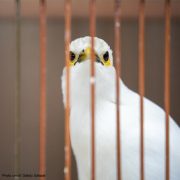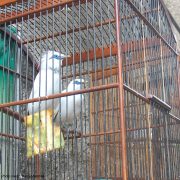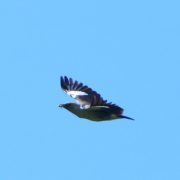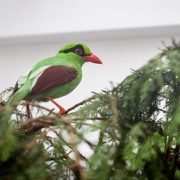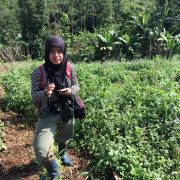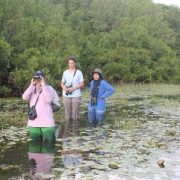The Asian Songbird Crisis Summit brings together bird experts from all over – from zoo curators and keepers, leaders in bird taxonomy and conservation, experts in field ornithology, tropical bird ecology, avian genetics and wildlife trade. All are there for one reason: to help find ways to protect and conserve South East Asia’s songbirds. Our Curator of Birds, Andrew Owen, tells us his story…
“Most notably, those that are being driven to extinction by the unrelenting cage bird trade in Indonesia. The first Songbird Crisis Summit was held back in September 2015; where a list of 30 of the most highly threatened species was compiled. The group also identified the most urgent needs for each species, with a focus on the importance of establishing conservation breeding programmes for all the priority species before it’s too late. More genetic research is needed to provide guidance to these programmes as well as education, community engagement and communication which are also essential if there’s going to be any hope of reintroducing these birds back into the wild in the future.
“The next steps are to form an International Union for Conservation of Nature (IUCN) Asian Songbird Trade Specialist Group to ensure specialist expertise from around the world work closely together to work towards finding a solution to the problem. This will be a huge undertaking that requires skill, dedication and hard work for many of the participants, but is a positive step in the right direction to ensure we find a solution to the songbird crisis.
“On top of our own Sing for Songbirds campaign, the European Association of Zoos and Aquaria (EAZA) will also be running a campaign that will focus solely on birds and many zoos around Europe will get involved, whether it’s education, awareness or fundraising.
“Perhaps the single most important thing to come out of the summit was the production of the priority bird list which was later presented to the Indonesian Minister for the Environment and Forestry, Siti Nurbaya Bakar; when I and a number of the group attended a meeting with her in Jakarta.
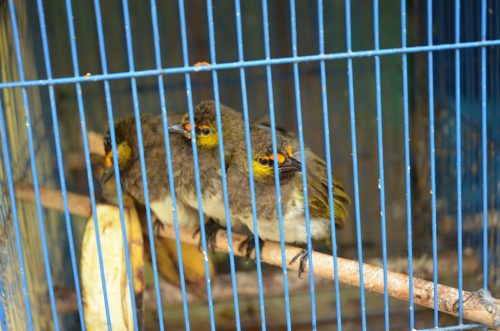
“Indonesia is currently preparing to update its list of protected species and we were pleased to be able to present our priority list and to discuss the burning issues that Indonesian songbirds face. I was able to talk about the important conservation work we at Chester are doing with our conservation partners Cikananga Conservation Breeding Centre – breeding some of the rarest species on the planet, setting up breeding programmes in Europe and planning a reintroduction programme for black-winged starlings (myna).
“During my trip to Indonesia, I was joined by Professor’s Nigel Collar from BirdLife International and Stuart Marsden from Manchester Metropolitan University along with two Chester Zoo conservation scholars, Tom and Harry, who are studying black-winged myna ecology and the culture of Indonesian bird keeping respectively.
“We visited Maura Angke, a filthy, rubbish-strewn area of mangrove on the edge of Jakarta. This is one of only two sites where the black-winged myna is known to survive in the wild, but unfortunately we didn’t see any birds during our visit and left with nothing more than muddy boots and mosquito bites!
“I then travelled onto East Java where I visited Alas Purwo National Park – a really nice park that still has a lot of lowland forest and open areas of grassland. These grasslands are very important for large ungulates, especially banteng, and in turn the banteng are really important for the grey-rumped myna’s which co-exist with them, riding on their backs, feeding on ticks and insects and on the grasshoppers and other bugs that the banteng disturb as they walk.
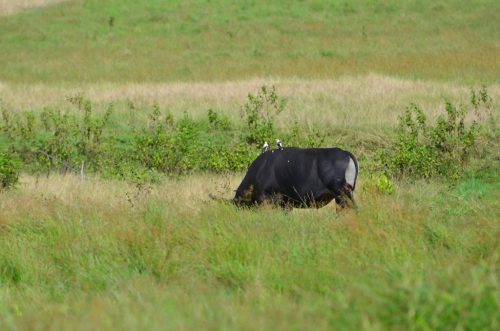
“Alas Purwo was meant to be one of only two remaining strongholds for this critically endangered songbird, but despite seeing good numbers of banteng, we only saw two grey-rumped myna’s. It was very disappointing and a possible sign that bird trapping is going on even in protected areas! Despite the species not being as sought after as the black-winged myna, the bird is still worth a lot of money to locals.
“Better luck was had when I visited the other known site for this species, Baluran National Park. I once again teamed up with Nigel, Stu, Tom and Harry and we were joined by Yanthi from Burung Indonesia, the Indonesian BirdLife partner. We spent three days in Baluran assessing habitat and surveying for birds. Here we counted 27 myna’s in one flock which was great to see, this time foraging with herds of rusa deer and feral water buffalo!
“Tom was able to start developing the monitoring techniques he will use for his studies and Stu and I observed a single bird carrying insects in its beak – clearly a sign it was part of a pair rearing chicks nearby, which was very positive indeed.
“The new state of the art breeding aviary, part-funded by Chester Zoo, built last year from top quality steel and strong mesh look great and are already bearing fruit – the first Javan green magpies hatched chicks while I was there, which was wonderful news. These chicks have since fledged and are doing well.
WE HAVE TO WORK TOGETHER
That’s why we need YOUR help too. Your support can make a BIG difference to saving PRECIOUS songbirds from EXTINCTION.
COMMUNITY HUB
Share your STORY and INSPIRE our conservation community. Let’s work together to PREVENT EXTINCTION!
